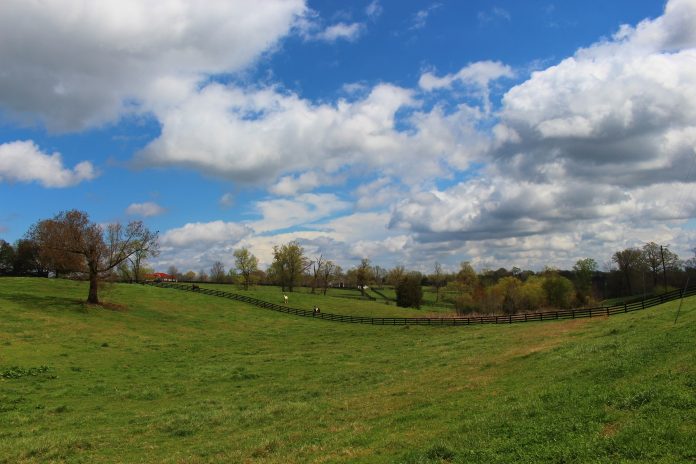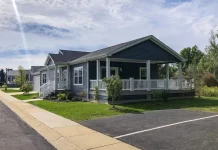When you choose land for a mobile home, there is a lot to think about. Here are a few topics and explanations, with a very useful home buyer’s guide too
Your retailer can provide guidance on how to choose land for a mobile home
The person you work with to buy your home and get all the amenities and extras you like can be a great resource. You’re already there, making vital decisions together on floor plans, material types and add-ons. Why not ask about area properties that might fit your needs? Does your seller know any landowners interested in offers. Where are other people placing their homes, or are there new developments in the works?

Understand the Local Zoning Requirements
If you’ve contacted a real estate agent to scout property for you, that person will have a working understanding of where in the community you are allowed to place a manufactured home. Or, if there are any doubts, they will know how to reference zoning lines and how your property sits in within the zoning plan.
However, this early scouting for land might be a fun endeavor. Don’t leave it all to your agent! You probably have a good idea of what part of town you want to live in. Maybe there’s a particular tree-lined ridge you’re fond of, or an area that provides easy access to your child’s school or your workplace.
Or maybe you’ve lived in one part of town and want to try somewhere new?
Regardless of your intentions, Google maps provides some great overviews (literally!) of property in nearly every area of the United States. And when you get on to something you might like, take a drive and look for yourself. Are there sales signs out? Are there other manufactured or mobile homes in the area? If so, you might be onto something.
How much grading is likely to be needed, and is it in your budget? Earthmoving can be a pricey endeavor
Regardless of what property you decide is the right one for your home, some grading and earthwork will be needed.
“The ground under your home needs to be built up to provide for drainage away from the home site in all directions,” said Karl Radde, general manager for Southern Comfort Homes in Bryan, Texas. “Your retailer and installer will have an understanding of minimum standards in your area. That said, whichever route you go, the home is only as good as the foundation. The more work done up to and including poured concrete minimizes the work and money that may be required later when re-leveling the home.”
Radde also suggests taking a look at the federal standards for siting a home on land. These directions will get you moving in the right direction, and should be paired against local and state regulations as well.

How accessible is the site from a main road? There needs to be access for home delivery
Yes, looking from above on a map or driving by in your car can whet the appetite for what is possible. But remember, your home will be delivered behind a large truck that needs room to safely maneuver with your home.
So, if the ideal land for your home involves narrow roads, hairpin turns or steep inclines, added earthmoving will be required. That can be pricey. If there are changes to be made to the access road, make sure your grading and site prep contractor is aware and can do it all in the same trip. This will help minimize cost and frustration. If you have doubt about whether the approach to your chosen property will work for your home delivery, contact the transport company ahead of time and ask them to assess the area. Maybe they’ve been there, or maybe they can make a quick visit between other jobs.
How should your home sit on the land you choose?
Most experts agree, a manufactured home looks best with the broadside facing the road, street or breadth of the property. How your home will sit on the property also informs where and how site prep will be handled for utilities and any add-ons like a garage, porch or shed. And this leads us to our next question, and answer…

What is the easiest way to connect utilities to the land you choose for your mobile home? The closer the better for your budget.
Every home needs a connection to water, electricity and sewage. Depending on how far your property is from a municipal system, you’ll have to make decisions about whether you will want a well and septic system on your land.
Again, each of these options, even if you’re creating a main to the electrical grid or other systems, will require some earth moving and in ground utilities. If you are connecting to municipal utilities, you’ll want to be as close to the system as possible while maintaining your frontage and privacy expectations. Every foot of line you bury is an added expense. If you opt for a well and septic system, you’ll want to have them out of the way of the approach, parking, property lines and downslopes. They should be clear of obstruction about 20 feet in every direction. And the well and septic, if you’re using both, should be no less than 150 feet apart from each other depending on state and local regulations.
Will there be seasonal access issues, like flood barriers or snow removal? Make sure your home will be accommodating year round.
Yes, we live in a dynamic world. Most locales nationwide have some type of seasonality, whether it’s the nor’easter or the monsoon season. Most often, homebuyers will conduct their business in the spring and summer, but take into account the likely conditions in your area for the other two months of the season to ensure you’re safe and comfortable throughout the year.

Do you want the parcel cleared for landscape design, or maintained with some natural growth?
With many of the logistics out of the way, consider the natural elements of the land you’ve chosen. Do they play into your vision for your new place in the world. In commercial development, many professionals prefer to entirely clear the land before doing the work, then landscape in the latter phases. For a singular, residential effort, there’s greater flexibility. If there’s an old linden tree you love, plan to keep it and position your home in accordance. Maybe there’s a gentle slope you’d like to look over, or a pond on the property. Some of these natural elements can remain and play into the final product.
How close are you to shopping, fuel and other basic needs?
Living in a remote location can be alluring, but when you forget that grocery item you needed… Should it be another 30 mile trip from the land you choose for your mobile home. When the weather turns cold, will you want to spend as much time on the road for daily necessities, or a trip to the library or movie theater? And the further from the main road your home sits, the more access road you will be responsible for developing and maintaining.
Being near an interstate has its advantages. When you’re scouting properties, pay attention to traffic noise. If the highway a quarter mile off is muffled by trees and other natural surroundings, maybe it would be an advantage to reduce trip time and make it easier for friends and relatives to visit.
What lot size makes sense for you? You want to balance your investment goals with your tolerance for maintenance. Each added square foot cost a bit more, but can add to your investment too. Does it make sense to buy more now while land is cheap? Or would you rather save the time mowing and doing other seasonal chores required of a large property?
Did you think we forgot about your handy home buyers guide?
Don’t fret — here is MHVillage’s handy mobile home buyers guide; take it on the road with you, show it to your agent… And rest assured you’re making the best decisions on how to choose land for a mobile home.














